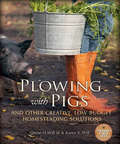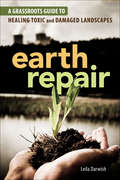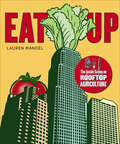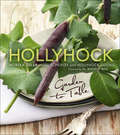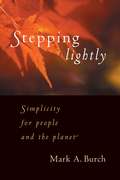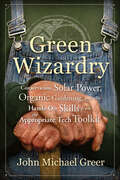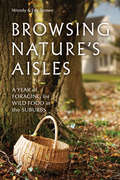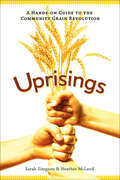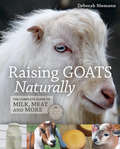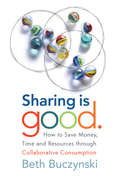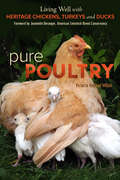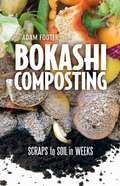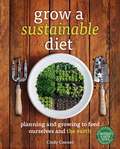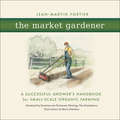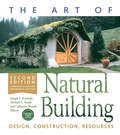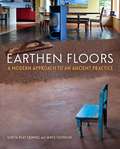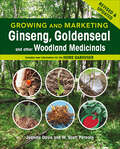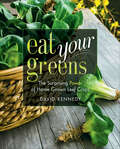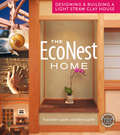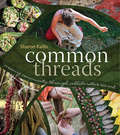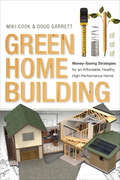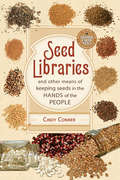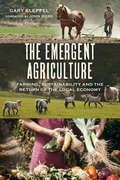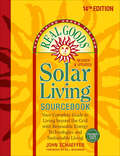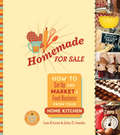- Table View
- List View
Plowing with Pigs and Other Creative, Low-Budget Homesteading Solutions
by Karen K. Will Oscar H. WillFueled by a failing economy and a passionate desire for a return to simpler times, a new wave of homesteaders is seeking the good life and the kind of true satisfaction that can only be built, not bought. Many of these modern pioneers are cash poor, but rich in energy and creativity. Plowing with Pigs and Other Creative, Low-Budget Homesteading Solutions offers them a set of fresh ideas for achieving independence through sweat equity and the use of unconventional resources. This highly readable and entertaining guide brings together answers to common problems faced by homesteaders young and old, urban, suburban, and rural. Traditional knowledge is combined with MacGyver-style ingenuity to create projects that maximize available resources, including: Animal management strategies for the yard, garden, and field Pole building and construction techniques from woodlot materials Replacing farm machinery with homemade hand tools and implements Leveraging increased self-sufficiency into a home-based business Whether you are a dreamer or a doer, Plowing with Pigs will inspire, challenge, and enable you to do more with less (and have fun doing it). Oscar H. (Hank) Will III is a farmer, scientist, and author, known for seeking and implementing creative farmstead solutions. The editor of Grit magazine, Hank has published hundreds of articles and five books on a range of topics including antique farm machinery. Karen K. Will is editor of The Heirloom Gardener magazine and author of Cooking with Heirlooms: Seasonal Recipes with Heritage-Variety Vegetables and Fruits. She operates Prairie Turnip Farm with her husband Oscar H. Will III.
Earth Repair: A Grassroots Guide to Healing Toxic and Damaged Landscapes
by Leila DarwishMillions of acres of land have been contaminated by pesticides, improperly handled chemicals, dirty energy projects, toxic waste, and other pollutants in the United States alone. This toxic legacy impacts the environment, our health, our watersheds, and land that could otherwise be used to grow healthy local food and medicines. Conventional clean-up techniques employed by government and industry are tremendously expensive and resource-intensive and can cause further damage. More and more communities find themselves increasingly unable to rely on those companies and governments who created the problems to step in and provide solutions.Earth Repair describes a host of powerful grassroots bioremediation techniques, including:Microbial remediation-using microorganisms to break down and bind contaminantsPhytoremediation-using plants to extract, bind, and transform toxinsMycoremediation-using fungi to clean up contaminated soil and waterPacked with valuable, firsthand information from visionaries in the field, Earth Repair empowers communities and individuals to take action and heal contaminated and damaged land. Encompassing everything from remediating and regenerating abandoned city lots for urban farmers and gardeners to recovering from environmental disasters and industrial catastrophes such as oil spills and nuclear fallout, this fertile toolbox is essential reading for anyone who wishes to transform environmental despair into constructive action.Leila Darwish is a community organizer, urban gardener, and permaculture designer with a focus on using grassroots bioremediation to address environmental justice issues in communities struggling with toxic contamination of their land and drinking water.
EAT UP: The Inside Scoop on Rooftop Agriculture
by Lauren MandelSoaring prices and concerns about chemical-laden fruits and vegetables increasingly drive us to grow our own healthy food close to home. In cities, however, vanishing ground space and contaminated soils spur farmers, activists, and restaurateurs to look to the skyline for a solution. The hunger for local food has reached new heights, and rooftops can provide the space that cities need to bring fresh, organic produce to tables across North America.The first full-length book to focus entirely on rooftop agriculture, Eat Up views this growing movement through a practitioner's lens, explaining:Structural, access, and infrastructural considerationsZoning and building codesProven growing techniquesBusiness and marketing strategiesThis graphically rich guide provides inspiration and advice to aspiring growers through photographs of successful rooftop farms and gardens and interviews with industry professionals. Easy-to-use checklists and a decision tree are included to help gauge the viability of each unique rooftop opportunity. Essential reading for home gardeners, entrepreneurs, restaurateurs, policy makers, academics, and designers, Eat Up takes urban agriculture to a whole new level, proving that rooftop farming is not just pie in the sky-it is the future of urban food.New Society is pleased to release the electronic version of Eat Up as a full-color ebook.Lauren Mandel holds a master's degree in landscape architecture from the University of Pennsylvania and a bachelor of arts degree in environmental science. She is a project manager and rooftop agriculture specialist at Roofmeadow, where she designs green roofs and oversees green roof and rooftop agriculture projects around the country.
Hollyhock: Garden to Table
by Andrew Weil Moreka Jolar Heidi ScheifleyHollyhock-renowned the world over as an unparalleled center of learning and connection-exists to inspire, nourish, and support people who are making the world better. At the heart of this unique institution, located on beautiful Cortes Island, is Hollyhock's spectacular organic garden, just steps from the ocean view kitchen. Serving up exquisite meals for thirty years, the Hollyhock cooks are back with a new collection, boasting over two hundred new garden-inspired recipes.Hollyhock: Garden to Table invites you to join in a celebration of the beauty of fresh, local food-filled with imaginative ideas and seasoned with global inspiration. The versatility of whole grains, healthy oils, and natural sweeteners is showcased in mouthwatering creations such as:Thin-Crust Pizza with Nettle Pesto and Roasted Sweet Potatoes, Asparagus, and ChevreBlack Sesame Crusted Albacore Tuna with Ponzu SauceSoft Polenta with Roasted Butternut Squash, Caramelized Onions, Peas, and Smoked CheddarHoney Roasted Pears with Balsamic and MascarponeFocusing on sustainable seafood and garden-fresh foods from wherever you are, Hollyhock: Garden to Table will have you leafing through its pages for your next great meal again and again. Welcome to the Hollyhock kitchen!Moreka Jolar has been a chef at Hollyhock for fifteen years. She is co-author of the best-selling cookbook Hollyhock Cooks.Heidi Scheifley is a certified gourmet natural foods chef who has cooked in kitchens from Hollyhock on Cortes Island, Canada to Greece to Southeast Asia, Egypt, Israel, Nepal, India, and Hawaii.
Stepping Lightly
by Mark A. BurchWhile the voluntary simplicity movement has grown by leaps and bounds in recent years, it is still often stereotyped as being mainly concerned with a thrifty lifestyle. But simple living has much deeper implications than just cleaning closets or selling off a second car. In Stepping Lightly, Mark Burch considers the deeper rewards of voluntary simplicity for individuals, and how the practice of simple living can be an essential part of the solution to our social and environmental problems. Thoughtful and eloquent, this book will appeal to a wide range of readers interested in committing themselves to stepping lightly into a more sustainable future.
Green Wizardry: Conservation, Solar Power, Organic Gardening, and Other Hands-On Skills from the Appropriate Tech Toolkit
by John Michael GreerGreen Wizardry is a hands-on guide to homescale energy conservation, backyard food production and other commonsense responses to scarcity. Written by a veteran of the 1970s appropriate technology movement, it offers tried and tested solutions and a wealth of nearly forgotten practical skills to help individuals, families and communities cope creatively with the end of the age of cheap energy.
Browsing Nature's Aisles: A Year of Foraging for Wild Food in the Suburbs
by Wendy Brown Eric BrownFor most, wild edibles are a passing curiosity - we gather enough summer berries for jam or maybe some stinging nettles for soup or tea. Browsing Nature's Aisles tells the story of how one suburban family committed to increasing their food security by incorporating wild foods as a dietary staple - and proves that you can flourish through foraging too.
Uprisings: A Hands-On Guide to the Community Grain Revolution
by Heather Mcleod Sarah SimpsonUprisings offers practical advice to empower and inspire individuals and community groups interested in growing and eating local grains. Step-by-step instructions on everything you need to know for successful small scale grain production are rounded out by a bushel of case studies demonstrating how to develop a community grain model suitable to any group's unique needs and resources.
Raising Goats Naturally
by Deborah NiemannThere is no one-size-fits-all approach to raising goats (or any livestock for that matter). But by working with nature, you can raise happy, healthy dairy goats and produce your own milk, cheese, meat, fertilizer, leather, fiber and soap -- all without relying on drugs or following the factory-farm model. Raising Goats Naturally will show you how.
Sharing is Good
by Beth BuczynskiCollaborative consumption is a new way of living in which access is valued above ownership, experience is prized over material possessions, and "mine" becomes "ours," allowing everyone's needs to be met with minimum waste. Bursting at the seams with hundreds of helpful tips and valuable resources, Sharing is Good is a practical guide to this new and exciting "sharing economy."
Pure Poultry
by Victoria Redhed MillerPure Poultry is a timely resource for new and experienced poultry keepers who want to raise heritage breeds as an integral part of a more sustainable food system. This inspiring "how-to and why-to" guide combines revealing and often humorous anecdotes with detailed information on everything from housing, breeding and day-to-day care, to cooking and food preservation.
Bokashi Composting
by Adam FooterBokashi composting relies on anaerobic fermentation in a closed system to recycle food waste in your kitchen, garage or apartment. Unlike conventional composting, the bokashi method can break down heavier items like meat, fish and cheese, and usually takes no more than two weeks. From scraps to soil, Bokashi Composting is a complete, step-by-step, do-it-yourself guide to this amazing process.
Grow a Sustainable Diet
by Cindy ConnerEveryone loves to prepare a meal with ingredients fresh from their own garden. But for most of us, no matter how plentiful our harvest, homegrown produce comprises only a fraction of what we eat. And while many gardening guides will tell you everything you ever wanted to know about individual crops, few tackle the more involved task of helping you maximize the percentage of your diet you grow yourself.Grow a Sustainable Diet will help you develop a comprehensive, customized garden plan to produce the maximum number of calories and nutrients from any available space. Avoid arriving in August buried under a mountain of kale or zucchini (and not much else) by making thoughtful choices at the planning stage, focusing on dietary staples and key nutrients. Learn how to calculate: Which food and cover crops are best for your specific requirements How many seeds and plants of each variety you should sow What and when to plant, harvest, and replant for maximum yieldFocusing on permaculture principles, bio-intensive gardening methods, getting food to the table with minimum fossil fuel input, and growing crops that sustain both you and your soil, this complete guide is a must-read for anyone working towards food self-sufficiency for themselves or their family.Cindy Conner is a permaculture educator, founder of Homeplace Earth, and the producer of two popular instructional DVDs on sustainable gardening. Her passion is exploring growing a complete diet in a small space while minimizing the use of fossil fuels.
The Market Gardener: A Successful Grower's Handbook for Small-Scale Organic Farming
by Jean-Martin Fortier&“Few books have grabbed my attention as dramatically as this one—because it&’s ultimately do-able for thousands of would-be food and farm healers.&” —Joel Salatin, Polyface Farm Grow better not bigger with proven low-tech, human-scale, biointensive farming methods Making a living wage farming without big capital outlay or acreages may be closer than you think. Growing on just 1.5 acres, Jean-Martin and Maude-Helene feed more than 200 families through their thriving CSA and seasonal market stands. The secret of their success is the low-tech, high-yield production methods they&’ve developed by focusing on growing better rather than growing bigger, making their operation more lucrative and viable in the process. The Market Gardener is a compendium of proven horticultural techniques and innovative growing methods. This complete guide is packed with practical information on: · Setting-up a micro-farm by designing biologically intensive cropping systems, all with negligible capital outlay · Farming without a tractor and minimizing fossil fuel inputs through the use of the best hand tools, appropriate machinery and minimum tillage practices · Growing mixed vegetables systematically with attention to weed and pest management, crop yields, harvest periods and pricing approaches. Inspired by the French intensive tradition of maraichage and by iconic American vegetable grower Eliot Coleman, author and farmer Jean-Martin shows by example how to start a market garden and make it both very productive and profitable. &“Very well done and should be of great use to market growers everywhere.&” —Eliot Coleman, organic farming pioneer and author of The New Organic Grower &“Both visionary and practical, it is a work of rare intelligence.&” —Charles Herve-Gruyer, permaculture teacher and grower at la Fermedu BecHellouin, France
The Art of Natural Building
by Michael Smith Joseph F. Kennedy Catherine WanekThe popularity of natural building has grown by leaps and bounds, spurred by a grassroots desire for housing that is healthy, affordable, and environmentally responsible. While there are many books available on specific methods such as straw-bale construction, cob, or timber framing, there are few resources which introduce the reader to the entire scope of this burgeoning field.Fully revised and updated, The Art of Natural Building is the complete and user-friendly introduction to natural building for everyone from the do-it-yourselfer to architects and designers. This collection of articles from over fifty leaders in the field is now stunningly illustrated with over two-hundred full-color photographs of natural buildings from around the world. Learn about: The case for building with natural materials, from the perspectives of sustainability, lifestyle, and health What you need to know to plan and design your own beautiful and efficient natural home Explanations of thirty versatile materials and techniques, with resources on where to go for further information on each How these techniques are being used to address housing crises around the world. Clearly written, logically organized, and beautifully illustrated, The Art of Natural Building is the encyclopedia of natural building.Joseph F. Kennedy is a designer, builder, writer, artist, educator, and co-founder of Builders Without Borders.Michael G. Smith is a respected workshop instructor, consultant, and co-author of the best-selling book The Hand-Sculpted House.Catherine Wanek is a co-founder of Builders Without Borders and author/photographer of The Hybrid House and The New Straw Bale Home.
Earthen Floors
by Sukita Reay Crimmel James ThomsonFor most of human history, people have lived in durable, comfortable buildings made from natural materials such as soil, sand, rocks, and fiber. All over the globe, these ancient traditions persist; a quarter to a third of the world's population today lives in houses built partially or entirely of earth. Conventional Western building techniques using industrial materials may save time and create efficiencies, but these perceived savings come at considerable financial and environmental cost.As well as boasting a unique and beautiful aesthetic, natural building techniques are accessible, affordable, and non-toxic. Earthen Floors: A Modern Approach to an Ancient Practice is the first comprehensive, fully illustrated manual covering the history, use, and maintenance of this attractive, practical flooring option. This detailed, fully illustrated guide explains every part of the process, including: Sourcing and harvesting materials Preparing the subfloor Pouring, finishing, and sealing the floor Living with and maintaining your earthen floorBecause information on creating quality earthen floors was not previously widely available, there have been some negative experiences. Drawing on the combined knowledge of the most qualified earthen floor practitioners, as well their own substantial experience, the authors deliver the definitive resource for this exciting technique, perfect for everyone from the novice to veteran builder.Sukita Reay Crimmel has installed over twenty thousand square feet of earthen flooring, and is one of the preeminent experts in the emerging field of earthen floors.James Thomson is part of House Alive, one of the leading natural building training organizations in the country.
Growing and Marketing Ginseng, Goldenseal and other Woodland Medicinals
by W. Scott Persons Jeanine DavisNot all saleable crops are dependent on access to greenhouses or sun-drenched, arable land. Shade-loving medicinal herbs can be successfully cultivated in a forest garden for personal use or as small-scale cash crops. Growing and Marketing Ginseng, Goldenseal and other Woodland Medicinals is a complete guide to these increasingly popular botanicals, aimed at aspiring and experienced growers alike.In this fully revised and updated edition, authors Jeanine Davis and W. Scott Persons show how more than a dozen sought-after native species can generate a greater profit on a rugged, otherwise idle woodlot than just about any other legal crop on an equal area of cleared land. With little capital investment but plenty of sweat equity, patience, and common sense, small landowners can preserve and enhance their treed space while simultaneously earning supplemental income. Learn how to establish, grow, harvest, and market: Popular medicinal roots such as ginseng, goldenseal, and black cohosh; Other commonly used botanicals including bloodroot, false unicorn, and mayapple The nutritious wild food, ramps, and the valuable ornamental galax.Packed with budget information, extensive references, and personal stories of successful growers, this invaluable resource will excite and inspire everyone from the home gardener to the full-time farmer.Jeanine Davis is an associate professor and extension specialist with North Carolina State University. Her focus is helping farmers diversify into new crops and organic agriculture.W. Scott Persons is the author of American Ginseng: Green Gold and an expert in growing and marketing wild-simulated and woods-cultivated ginseng.
Eat Your Greens: The Surprising Power of Home Grown Leaf Crops
by David KennedyOur industrialized food system is failing us, and as individuals we must take more responsibility for our own health and food security. Leaf crops produce more nutrients per square foot of growing space and per day of growing season than any other crops and are especially high in vitamins and minerals commonly lacking in the North American diet. As hardy as they are versatile, these beautiful leafy vegetables range from the familiar to the exotic. Some part of this largely untapped food resource can thrive in almost any situation.Eat Your Greens provides complete instructions for incorporating these nutritional powerhouses into any kitchen garden. This innovative guide: Shows how familiar garden plants such as sweet potato, okra, beans, peas, and pumpkin can be grown to provide both nourishing leaves and other calorie- and protein-rich foods Introduces a variety of non-traditional, readily adaptable alternatives such as chaya, moringa, toon, and wolfberry Explains how to improve your soil while getting plenty of vegetables by growing edible cover cropsBeginning with a comprehensive overview of modern commercial agriculture and rounded out by a selection of advanced techniques to maximize, preserve, and prepare your harvest, Eat Your Greens is an invaluable addition to the library of any gardening enthusiast.David Kennedy is the founder and director of Leaf for Life, a nonprofit organization dedicated to the elimination of global malnutrition through the optimum use of leaf crops, and is the author of 21st Century Greens and the Leaf for Life Handbook.
The EcoNest Home: Designing & Building a Light Straw Clay House (Mother Earth News Books for Wiser Living)
by Paula Baker-Laporte Robert LaporteAn EcoNest is not just a home—it is a breathtakingly beautiful structure that nurtures health and embraces ecology. This unique approach to construction combines light clay straw, timber framing, earthen floors, natural plasters, and other natural techniques with the principles of Building Biology to create a handcrafted living sanctuary. By bringing together time-honored traditions and modern innovations, owners of EcoNests enjoy living spaces that reflect the best of both worlds. The EcoNest Home is an in-depth exploration of the benefits of choosing this technique over conventional alternatives, combined with a complete practical guide for prospective designers and builders. Paula Baker-Laporte and Robert Laporte draw on their own extensive experience to provide: A detailed explanation of the nature-based science behind EcoNests Fully illustrated, step-by-step instructions to guide you through construction Dozens of inspiring photos of completed projects The most comprehensive North American resource on light clay straw construction, written by its leading proponents, The EcoNest Home is a must-read for anyone considering building their own healthy, affordable, environmentally friendly natural home. Paula Baker-Laporte and Robert Laporte are the creators of the EcoNest concept and the authors of Econest: Creating Sustainable Sanctuaries of Clay, Straw and Timber. Robert has built over fifty houses using the EcoNest system and has trained hundreds of professional builders and aspiring owner-builders in using the techniques. Paula has worked as the architect for the EcoNest Company for nearly two decades and is the author of Prescriptions for a Healthy House.
Common Threads
by Sharon KallisDisposing of unwanted natural materials can be expensive and time-consuming, or it can present a tremendous opportunity for creating collaborative eco-art. Invasive-species control, green-waste management, urban gardening, and traditional crafts can all be brought together to strengthen community relationships and foster responsible land stewardship. Simple, easily taught, creative techniques applied with shared purpose become the modern-day equivalent of a barn raising or a quilting bee.Common Threads is a unique guide to engaging community members in communal handwork for the greater good. Sharon Kallis provides a wealth of ideas for: Working with unwanted natural materials, with an emphasis on green waste and invasive species Visualizing projects that celebrate the human element while crafting works of art or environmental remediation Creating opportunities for individuals to connect with nature in a unique, meditative, yet community-oriented wayCombining detailed, step-by-step instructions with tips for successful process and an overview of completed projects, Common Threads is a different kind of weaving book. This inspirational guide is designed to help artists and activists foster community, build empowerment, and develop a do-it-together attitude while planning and implementing works of collaborative eco-art.Sharon Kallis is a Vancouver artist who specializes in working with unwanted natural materials. Involving community in connecting traditional hand techniques with invasive species and garden waste, she creates site-specific installations that become ecological interventions. Her recent projects include The Urban Weaver Project, Aberthau: flax=food+fibre, and working closely with fiber artists, park ecologists, First Nations basket weavers, and others.
Green Home Building: Money-Saving Strategies for an Affordable, Healthy, High-Performance Home
by Doug Garrett Miki CookAccording to conventional wisdom, building a green home is an expensive endeavor. The standard approach treats green as an add-on, tacking "premium" products, finishes, and equipment onto a traditional home design. As a result, many green home projects end up over budget or fail to achieve their environmental and performance goals.Green Home Building explodes the myth that green homes have to cost more. Using proven methods based on applied building science, the authors show how to: Lower base construction costs to provide funding for high performance upgrades Achieve a net-zero energy home, including "zero-ing" water, waste, carbon, and associated costs within fifteen years Live affordably into the future, despite anticipated rising costs for fuel, water, materials, taxes, and health careThis comprehensive guide to building green on any budget defines the strategies that maximize the return on green investments. Written for anyone who has ever been swayed by the argument that the price tag limits how green a home can be, Green Home Building is a must-read for builders, contractors, architects, designers, and homeowners.Miki Cook is a green building and sustainability consultant who has dedicated her career to educating contractors and the public on the strategies, methods, and benefits of green homes.Doug Garrett has trained thousands of homebuilders, architects, and sub-contractors to build energy-efficient homes using applied building science to improve comfort, durability, and healthfulness while meeting or exceeding the energy code.
Seed Libraries: And Other Means of Keeping Seeds in the Hands of the People
by Cindy ConnerHistorically, seed companies were generally small, often family-run businesses. Because they were regionally based, they could focus on varieties well-suited to the local environment. <P><P>A Pacific Northwest company, for example, would specialize in different cultivars than a company based in the Southeast. However the absorption of these small, independent seed businesses into large multinationals, combined with the advancement of biotechnology resulting in hybrids and GMO seeds, has led to a serious loss of genetic diversity. The public is now at the mercy of the corporations that control the seeds.In the past few years, gardeners have realized the inherent danger in this situation. A growing movement is striving to preserve and expand our stock of heritage and heirloom varieties through seed saving and sharing opportunities. Seed Libraries is a practical guide to saving seeds through community programs, including: Step-by-step instructions for setting up a seed library A wealth of ideas to help attract patrons and keep the momentum going Profiles of existing libraries and other types of seed saving partnershipsWhoever controls the seeds controls the food supply. By empowering communities to preserve and protect the genetic diversity of their harvest, Seed Libraries is the first step towards reclaiming our self-reliance while enhancing food security and ensuring that the future of food is healthy, vibrant, tasty, and nutritious.Cindy Conner is a permaculture educator, founder of Homeplace Earth and producer of two popular instructional gardening DVDs. She is also the author of Grow a Sustainable Diet.
The Emergent Agriculture
by Gary Kleppel John IkerdLong embraced by corporations who are driven only by the desire for profit, industrial agriculture wastes precious resources and spews millions of tons of greenhouse gases into the atmosphere each year, exacerbating climate change and threatening the very earth and water on which we depend. However, this dominant system, from which Americans obtain most of their food, is being slowly supplanted by a new paradigm.The Emergent Agriculture is a collection of fourteen thematic essays on sustainability viewed through the lens of farming. Arguing that industrial food production is incompatible with the realities of nature, science, and ethics, this lyrical narrative makes the case for a locally based food system which is: Stable in the face of economic uncertainty Resilient in the face of environmental variability Grounded in stewardship of the land, on attaching value to food and the craft involved in producing it, and on respecting the dignity of farmers, consumer,s and livestockA revolution in food production is underway. Written from the vantage point of an ecologist who is also a farmer, The Emergent Agriculture is essential reading for anyone interested in food security and the potential for growing local economies. Food for thought about the future of food.Gary Kleppel is a professor of biology at the SUNY Albany, where he focuses on sustainable agriculture, conservation-based grazing, and the ecology of human-dominated landscapes. He and his wife Pam are owners of Longfield Farm, where they produce grass-fed lamb, wool, free range chickens and eggs, and artisanal breads.
Real Goods Solar Living Sourcebook (Mother Earth News Books for Wiser Living)
by John SchaefferWhat book would you want if you were stranded on a desert island? Widely regarded as the "bible" of off-grid living, Real Goods Solar Living Source Book might be your best choice. With over six hundred thousand copies in print worldwide, it is the most comprehensive resource available for anyone interested in lessening their environmental footprint or increasing their energy independence.The Solar Living Sourcebook, Fourteenth Edition is the ultimate guide to renewable energy, sustainable living, natural and green building, off-grid living, and alternative transportation, written by experts with decades of experience and a passion for sharing their knowledge. This fully revised and updated edition includes brand new sections on permaculture and urban homesteading and completely rewritten chapters on solar technology, sustainable transportation, and relocalization. It also boasts greatly expanded material on: Natural building Permaculture and biodynamics Electric and biofuel-powered vehicles Passive solar Solar water heating Grid-tie photovoltaic systems--plus maps, wiring diagrams, formulae, charts, electrical code, solar sizing worksheets, and much more.Whether you're a layperson or a professional, novice or longtime aficionado, the Sourcebook puts the latest research and information at your fingertips--everything you need to know to make sustainable living a reality.John Schaeffer is the president and founder of Real Goods--the foremost global source for tools and information on renewable energy, energy efficiency, and sustainable living. Since 1978, through Real Goods, he has pioneered solar technology in North America, providing over one hundred and fifty megawatts of solar power and helping to solarize over eighteen thousand homes.
Homemade for Sale: How to Set Up and Market a Food Business from Your Home Kitchen (Mother Earth News Books for Wiser Living)
by John D. Ivanko Lisa KiviristFrom farm-to-fork and "Buy Local" to slow food and hand-made artisan breads, more people than ever are demanding real food made with real ingredients by real people. Widely known as "cottage food legislation," over forty-two states and many Canadian provinces have enacted recent legislation that encourages home cooks to create and sell a variety of "non-hazardous" food items, often defined as those that are high-acid, like pickles, or low moisture, like breads or cookies. Finally, "homemade" and "fresh from the oven" on the package can mean exactly what it says.Homemade for Sale is the first authoritative guide to conceiving and launching your own home-based food start-up. Packed with profiles of successful cottage food entrepreneurs, this comprehensive and accessible resource covers everything you need to get cooking for your customers, creating items that by their very nature are specialized and unique. Topics covered include: Product development and testing Marketing and developing your niche Structuring your business and planning for the future Managing liability, risk, and government regulationsYou can join a growing movement of entrepreneurs starting small food businesses from their home. No capital needed, just good recipes, enthusiasm, and commitment, plus enough know-how to turn fresh ingredients into sought-after treats for your local community. Everything required is probably already in your home kitchen. Best of all, you can start tomorrow! Lisa Kivirist and John D. Ivanko are co-authors of Farmstead Chef, ECOpreneuring, and Rural Renaissance, and are innkeepers of the award-winning Inn Serendipity Bed & Breakfast (innserendipity.com).
